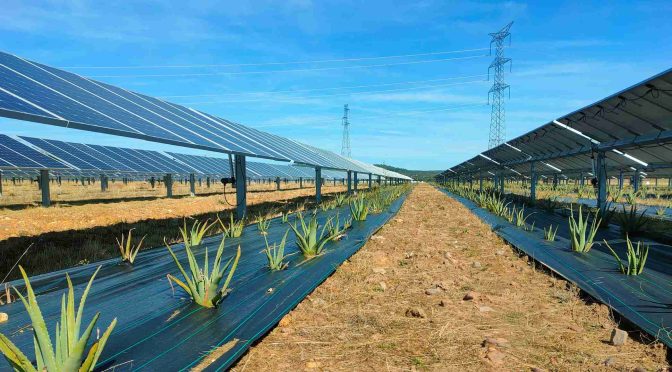Recent studies highlight the benefits of integrating agriculture and photovoltaic systems. Their conclusion? There is no risk of excessive land consumption.
Agrivoltaics is an innovative approach that allows solar energy eneration and farming practices to coexist and interact in a mutually beneficial way that also creates greater value for the area and local communities. In practical terms, it’s a system consisting of a ground-mounted photovoltaic system, located on land that is also used for agriculture and livestock farming. But it’s so much more than just simply sharing space. With agrivoltaics, the production of renewable energy to sustain energy transition is a perfect complement to pastoral and farming activities: it’s a win-win situation. For example, our solar plants can facilitate the cultivation of vegetables, legumes, forage crops, herbs and medicinal plants, or livestock-raising activities like sheep farming.
Land consumption: it’s not a problem
When we talk about agrivoltaics, the issue of potential land consumption usually comes up: is there a risk that large areas of farmland could be given over to energy production? In reality, the data clearly shows that the problem doesn’t exist, as was pointed out in recent months by Luca Marchisio, Head of Systems Strategy at Terna, the company that manages the electricity transmission networks in Italy. During a webinar organized by Elettricità Futura, the main association for companies in the Italian electricity sector,
and Cesi, the leading company in the inspection and certification of businesses linked to electricity, he stated: “We spent months geo-locating the requests for the connection of photovoltaic systems and we reached the conclusion that, from a technical point of view, the problem of land availability simply doesn’t exist.”
The development of renewables in Italy has been faced with challenging objectives in terms of decarbonization, from the goals of the Integrated National Energy and Climate Plan (PNIEC) to the “REpowerEU” plan, which calls for the installation of 85 GW of new capacity by 2030. Figures show that the development of new renewable capacity to achieve the country’s decarbonization and energy transition objectives by 2030 does not pose a serious problem in terms of land use: in order to achieve the additional 85 GW envisioned by the REpowerEU plan, we estimate a potential land use of about 0.3% of the whole Italian territory and about 0.6% if referring solely to agricultural land.
An inclusive use of land
We tested the agrivoltaic model in plants in Spain, Greece and Italy, and we found that the crops greatly benefitted from the presence of the photovoltaic systems. In particular, we noted an increase of up to 60% in the agricultural yield and the average weight of the fruit of some crop species such as peppers, as well as a rise in the amount of fruit produced, which was as high as 30% compared to the control areas where the yield was not affected by the presence of solar panels. And that’s not all: plants like aloe vera showed an increase in biomass volume of over 30%, and for other species of aromatic plants, there was an increased yield of more than 20%.
The presence of PV panels on agricultural land also reduces thermal stress on crops caused by the strong sunlight in the hottest hours of the day, thus enabling the creation of a better micro climate, reducing water evaporation and triggering a virtuous cycle: the panels protect the crops from excessive heat (saving up to 20% of the water required for irrigation) and, at the same time, the plants act to cool the surfaces of the photovoltaic panels, producing more energy.
Therefore, in light of the data, not only are we unable to find a problem linked to land consumption, but the use of agrivoltaics proves to be a virtuous eco-sustainable model which allows the production of renewable energy to increase the yield of agricultural land. All of this fosters biodiversity and gives value to the many professional figures, typically from the local area, that we involve in our projects: agronomists, farms, universities, research centers, and many other stakeholders; key figures who are crucial for a fruitful synergy between the world of energy and the world of agriculture, which are often mistakenly pitted against each other.


